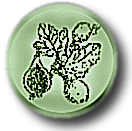Subsystem: Alkane biosynthesis in bacteria
This subsystem's description is:
A novel alkane biosynthesis pathway from cyanobacteria that consists of an acyl-acyl carrier protein reductase and an aldehyde decarbonylase, which together convert intermediates of fatty acid metabolism to alkanes and alkenes. The heterologous expression of the alkane operon in Escherichia coli leads to the production and secretion of C13 to C17 mixtures of alkanes and alkenes.
As suggested by Schirmer and Co. "These genes and enzymes can now be leveraged for the simple and direct conversion of renewable raw materials to fungible hydrocarbon fuels."
The operon is actually larger and includes adjacent genes coding for Sepiapterin reductase (EC 1.1.1.153) and GTP cyclohydrolase I (EC 3.5.4.16) type 1 (see subsystem "Pterin synthesis related cluster") and connect this alkane biosynthesis pathway to Pterin and Folate biosynthesis.
For more information, please check out the description and the additional notes tabs, below
| Literature References | Microbial biosynthesis of alkanes. Schirmer A Science (New York, N.Y.) 2010 Jul 30 | 20671186 |
|---|
| Diagram | Functional Roles | Subsystem Spreadsheet | Description | Additional Notes | |||||||||||||||||||||||
Oops! We thought there was a diagram here, but we can't find it. Sorry
A novel alkane biosynthesis pathway from cyanobacteria that consists of an acyl-acyl carrier protein reductase and an aldehyde decarbonylase, which together convert intermediates of fatty acid metabolism to alkanes and alkenes. The heterologous expression of the alkane operon in Escherichia coli leads to the production and secretion of C13 to C17 mixtures of alkanes and alkenes. As suggested by Schirmer and Co. "These genes and enzymes can now be leveraged for the simple and direct conversion of renewable raw materials to fungible hydrocarbon fuels." The operon is actually larger and includes adjacent genes coding for Sepiapterin reductase (EC 1.1.1.153) and GTP cyclohydrolase I (EC 3.5.4.16) type 1 (see subsystem "Pterin synthesis related cluster") and connect this alkane biosynthesis pathway to Pterin and Folate biosynthesis. SS started by RamyA and extended by VeronikaV This subsystem is based on a paper by Schirmer and coworkers published in Science in July 2010 [Science. 2010 Jul 30;329(5991):559-62. PMID: 20671186] | |||||||||||||||||||||||||||




